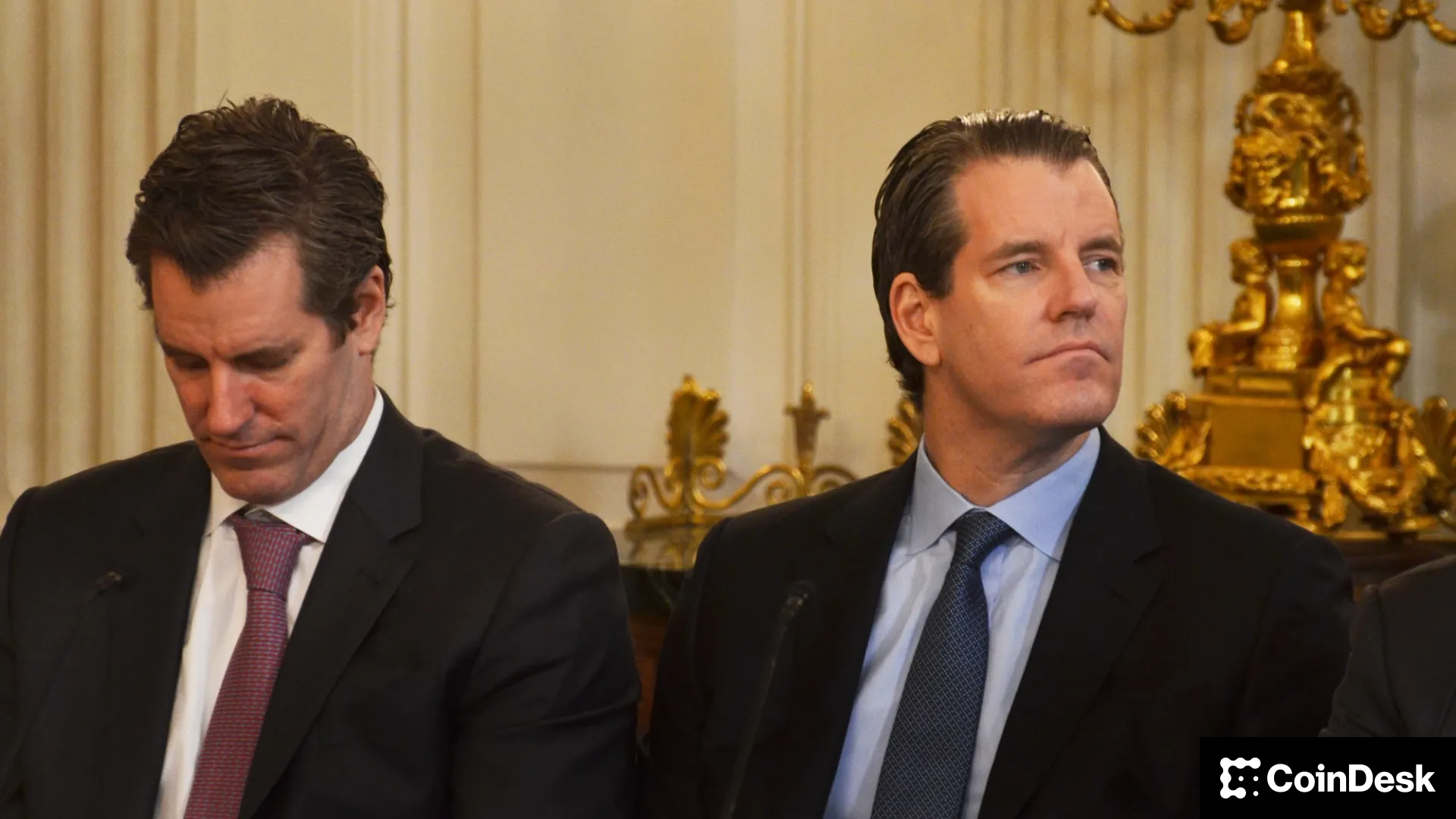Uncategorized
De-banking Deserves Urgent Attention

Until last week, the issue of de-banking remained largely an open secret, something known primarily to insiders like myself. As I work to protect people and entities affected by de-banking both in the U.S. and globally, I have witnessed firsthand the devastating economic and social impact this has had on businesspeople, nonprofit organizations and “politically exposed persons.”
This situation changed as millions of people became familiar with the concept of de-banking after venture capitalist Marc Andreessen <a href=»https://www.youtube.com/watch?v=pRj9pIITwEU» target=»_blank»>appeared on the Joe Rogan podcast</a>. Andreessen discussed the exclusion of politically disfavored individuals and entities from the financial system, focusing specifically on the crypto-assets industry.
His remarks triggered a wave of responses, drawing attention to the broader issue of de-banking in the tech and cryptocurrency sectors. Prominent figures like the <a href=»https://x.com/tyler/status/1862860178577563944″ target=»_blank»>Winklevoss brothers</a>, known for their contributions to cryptocurrency exchange development, voiced their frustrations. <a href=»https://x.com/davidmarcus/status/1862654506774810641″ target=»_blank»>David Marcus</a>, former leader of Facebook’s Libra/Diem project, commented on how the U.S. Treasury Secretary Janet Yellen allegedly pressured Federal Reserve Chair Jerome Powell to dissuade banks from supporting the project (which was started by Facebook). Similarly, <a href=»https://x.com/Nneuman/status/1862899117019566262″ target=»_blank»>Nick Neuman</a>, CEO of Casa, recounted his experience of being de-banked by Silicon Valley Bank. His company, which offers self-custodial services, faced rejection from nearly 50 banks before finally securing a partnership with one institution.
In her recently published memoir, former First Lady Melania Trump revealed that a bank abruptly terminated her long-standing financial relationship, and her son Barron was blocked from opening a new account at the same institution. While the bank’s name remains undisclosed, the incident highlights the arbitrary and opaque nature of such decisions.
People and entities are being “de-banked” at an alarming rate, meaning their access to financial services is being terminated either by direct political pressures, the weaponization of regulations, or simply as an unintended consequence of other regulations.
De-banking is economically isolating not only entrepreneurs in the crypto-assets sector but also a wide range of communities, including international businesses, humanitarian organizations, public individuals, human rights activists, businesses deemed as unethical, and legal immigrants.
I began working on this policy issue in the spring of 2023. While researching sanctions policy, I discovered that malicious political actors around the world were exploiting the financial system to repress their opponents, both domestically and globally. In Nicaragua, for example, activists like <a href=»https://www.journalofdemocracy.org/online-exclusive/how-dictators-use-financial-repression-against-their-opponents/» target=»_blank»>Felix Maradiaga</a> have argued that the government has abused the financial system to terminate bank accounts and strip the assets of activists, non-profit organizations, and even the Church.
This understudies policy issue sparked my interest, prompting me to delve deeper into this completely understudied policy issue. I spoke with numerous dissidents in exile, human rights defenders, and businesspeople who had been targeted in this manner. They shared how their bank accounts were arbitrarily closed, assets frozen, and private financial information weaponized against them.
Malicious political and business actors de-bank people and entities by abusing Anti-Money Laundering and Counter-Terrorism Financing (AML/CFT) regulations. For instance, they orchestrate targeted disinformation campaigns to falsely accuse individuals or organizations of money laundering or financing terrorism. Amplified through state-controlled media, these accusations feed into automated compliance systems used by financial institutions. Once flagged, the targeted accounts are often closed or denied access to services to avoid regulatory penalties — irrespective of the credibility of the claims. This has been the case of activists like <a href=»https://www.youtube.com/watch?v=RniCVb99mM8″ target=»_blank»>Lyudmyla Kozlovska</a>, President of the Open Dialogue Foundation.
Moreover, malicious political actors exploit the global trust placed in Financial Intelligence Units (FIUs), which serve as clearinghouses for financial data under AML/CFT frameworks. AML/CFT regulations require FIUs to exchange sensitive financial data with international counterparts to combat crime. However, in authoritarian regimes, FIUs often operate as tools of state repression, granting governments access to dissidents’ financial records, transaction histories, and personal details. This sensitive information is weaponized to intimidate, harass, and undermine critics both domestically and abroad.
De-banking and vulnerable groups
Beyond their deliberate weaponization, the misuse of AML/CFT laws frequently yields unintended consequences that disproportionately impact vulnerable groups, such as immigrants. Financial institutions in the U.S. often classify individuals from certain regions as “high risk,” as their countries of origin are labeled as “high-risk jurisdictions” by financial institutions. This classification triggers enhanced compliance measures, requiring additional documentation, background checks, and ongoing monitoring for these individuals to access financial services.
For immigrants, this creates barriers to entry into the financial system. Many face exorbitant costs and excessive scrutiny, discouraging financial institutions from onboarding them as clients. This “de-risking” practice, where banks terminate or deny services to perceived high-risk clients to minimize compliance burdens, often leaves immigrants without access to even basic banking services such as savings accounts or payment systems. Without these services, immigrants struggle to integrate into their host countries’ economies, send remittances to their families, or establish credit histories, perpetuating cycles of financial and social exclusion.
The Need for Awareness and Action
The rise of de-banking as a political weapon is a wake-up call for all of us to act. Silence only perpetuates these injustices. If we do not act now, the financial system risks becoming a privilege reserved for the few — a battleground for partisan agendas — rather than a neutral platform designed to empower individuals, safeguard their savings, and facilitate economic activity.
We need to continue raising awareness about this crisis and fight for a “Right to Banking.” This right must transcend nationality, political beliefs, or economic status, ensuring that no one is arbitrarily excluded from participating in the global economy. Guaranteeing this access is not only an economic necessity but a moral imperative, foundational to modern citizenship and human dignity. We also ought to protect new financial solutions in the crypto-assets space, as they are key to advancing financial inclusion globally — thanks to their permissionless nature and decentralized structure.
To achieve this, we must demand structural reforms that address the flaws in AML/CFT regulations. These laws must include safeguards to prevent their misuse as tools for political repression or financial exclusion, as well as clear remedies for victims of debanking. Structural reforms are essential to ensure that neither autocratic politicians nor malicious private sector actors can weaponize the financial system.
Let’s work together, policymakers, industry leaders, and civil society, to build momentum for reforms that preserve the financial system’s integrity, including the protection of the crypto-assets sector. Together, we must ensure that the financial system (traditional and modern financial instruments) remains an inclusive and well-functioning pillar of our market economy.
Business
Crypto Trading Firm Keyrock Buys Luxembourg’s Turing Capital in Asset Management Push

Crypto trading firm Keyrock said it’s expanding into asset and wealth management by acquiring Turing Capital, a Luxembourg-registered alternative investment fund manager.
The deal, announced on Tuesday, marks the launch of Keyrock’s Asset and Wealth Management division, a new business unit dedicated to institutional clients and private investors.
Keyrock, founded in Brussels, Belgium and best known for its work in market making, options and OTC trading, said it will fold Turing Capital’s investment strategies and Luxembourg fund management structure into its wider platform. The division will be led by Turing Capital co-founder Jorge Schnura, who joins Keyrock’s executive committee as president of the unit.
The company said the expansion will allow it to provide services across the full lifecycle of digital assets, from liquidity provision to long-term investment strategies. «In the near future, all assets will live onchain,» Schnura said, noting that the merger positions the group to capture opportunities as traditional financial products migrate to blockchain rails.
Keyrock has also applied for regulatory approval under the EU’s crypto framework MiCA through a filing with Liechtenstein’s financial regulator. If approved, the firm plans to offer portfolio management and advisory services, aiming to compete directly with traditional asset managers as well as crypto-native players.
«Today’s launch sets the stage for our longer-term ambition: bringing asset management on-chain in a way that truly meets institutional standards,» Keyrock CSO Juan David Mendieta said in a statement.
Read more: Stablecoin Payments Projected to Top $1T Annually by 2030, Market Maker Keyrock Says
Business
Crypto Trading Firm Keyrock Buys Luxembourg’s Turing Capital in Asset Management Push

Crypto trading firm Keyrock said it’s expanding into asset and wealth management by acquiring Turing Capital, a Luxembourg-registered alternative investment fund manager.
The deal, announced on Tuesday, marks the launch of Keyrock’s Asset and Wealth Management division, a new business unit dedicated to institutional clients and private investors.
Keyrock, founded in Brussels, Belgium and best known for its work in market making, options and OTC trading, said it will fold Turing Capital’s investment strategies and Luxembourg fund management structure into its wider platform. The division will be led by Turing Capital co-founder Jorge Schnura, who joins Keyrock’s executive committee as president of the unit.
The company said the expansion will allow it to provide services across the full lifecycle of digital assets, from liquidity provision to long-term investment strategies. «In the near future, all assets will live onchain,» Schnura said, noting that the merger positions the group to capture opportunities as traditional financial products migrate to blockchain rails.
Keyrock has also applied for regulatory approval under the EU’s crypto framework MiCA through a filing with Liechtenstein’s financial regulator. If approved, the firm plans to offer portfolio management and advisory services, aiming to compete directly with traditional asset managers as well as crypto-native players.
«Today’s launch sets the stage for our longer-term ambition: bringing asset management on-chain in a way that truly meets institutional standards,» Keyrock CSO Juan David Mendieta said in a statement.
Read more: Stablecoin Payments Projected to Top $1T Annually by 2030, Market Maker Keyrock Says
Business
Gemini Shares Slide 6%, Extending Post-IPO Slump to 24%

Gemini Space Station (GEMI), the crypto exchange founded by Cameron and Tyler Winklevoss, has seen its shares tumble by more than 20% since listing on the Nasdaq last Friday.
The stock is down around 6% on Tuesday, trading at $30.42, and has dropped nearly 24% over the past week. The sharp decline follows an initial surge after the company raised $425 million in its IPO, pricing shares at $28 and valuing the firm at $3.3 billion before trading began.
On its first day, GEMI spiked to $45.89 before closing at $32 — a 14% premium to its offer price. But since hitting that high, shares have plunged more than 34%, erasing most of the early enthusiasm from public market investors.
The broader crypto equity market has remained more stable. Coinbase (COIN), the largest U.S. crypto exchange, is flat over the past week. Robinhood (HOOD), which derives part of its revenue from crypto, is down 3%. Token issuer Circle (CRCL), on the other hand, is up 13% over the same period.
Part of the pressure on Gemini’s stock may stem from its financials. The company posted a $283 million net loss in the first half of 2025, following a $159 million loss in all of 2024. Despite raising fresh capital, the numbers suggest the business is still far from turning a profit.
Compass Point analyst Ed Engel noted that GEMI is currently trading at 26 times its annualized first-half revenue. That multiple — often used to gauge whether a stock is expensive — means investors are paying 26 dollars for every dollar the company is expected to generate in sales this year. For a loss-making company in a volatile sector, that’s a steep price, and could be fueling investor skepticism.
-

 Business11 месяцев ago
Business11 месяцев ago3 Ways to make your business presentation more relatable
-

 Fashion11 месяцев ago
Fashion11 месяцев agoAccording to Dior Couture, this taboo fashion accessory is back
-

 Entertainment11 месяцев ago
Entertainment11 месяцев ago10 Artists who retired from music and made a comeback
-

 Entertainment11 месяцев ago
Entertainment11 месяцев ago\’Better Call Saul\’ has been renewed for a fourth season
-

 Entertainment11 месяцев ago
Entertainment11 месяцев agoNew Season 8 Walking Dead trailer flashes forward in time
-

 Business11 месяцев ago
Business11 месяцев ago15 Habits that could be hurting your business relationships
-

 Entertainment11 месяцев ago
Entertainment11 месяцев agoMeet Superman\’s grandfather in new trailer for Krypton
-

 Entertainment11 месяцев ago
Entertainment11 месяцев agoDisney\’s live-action Aladdin finally finds its stars




